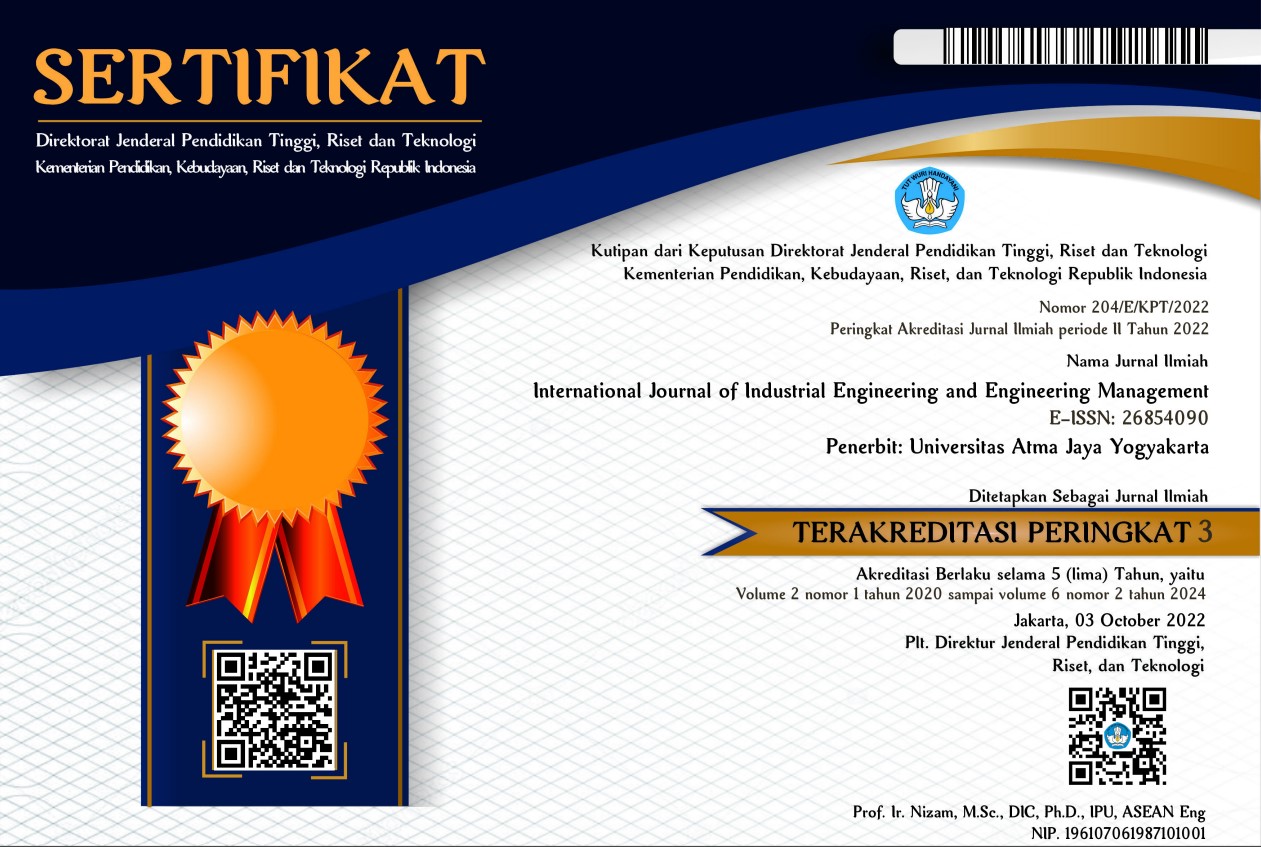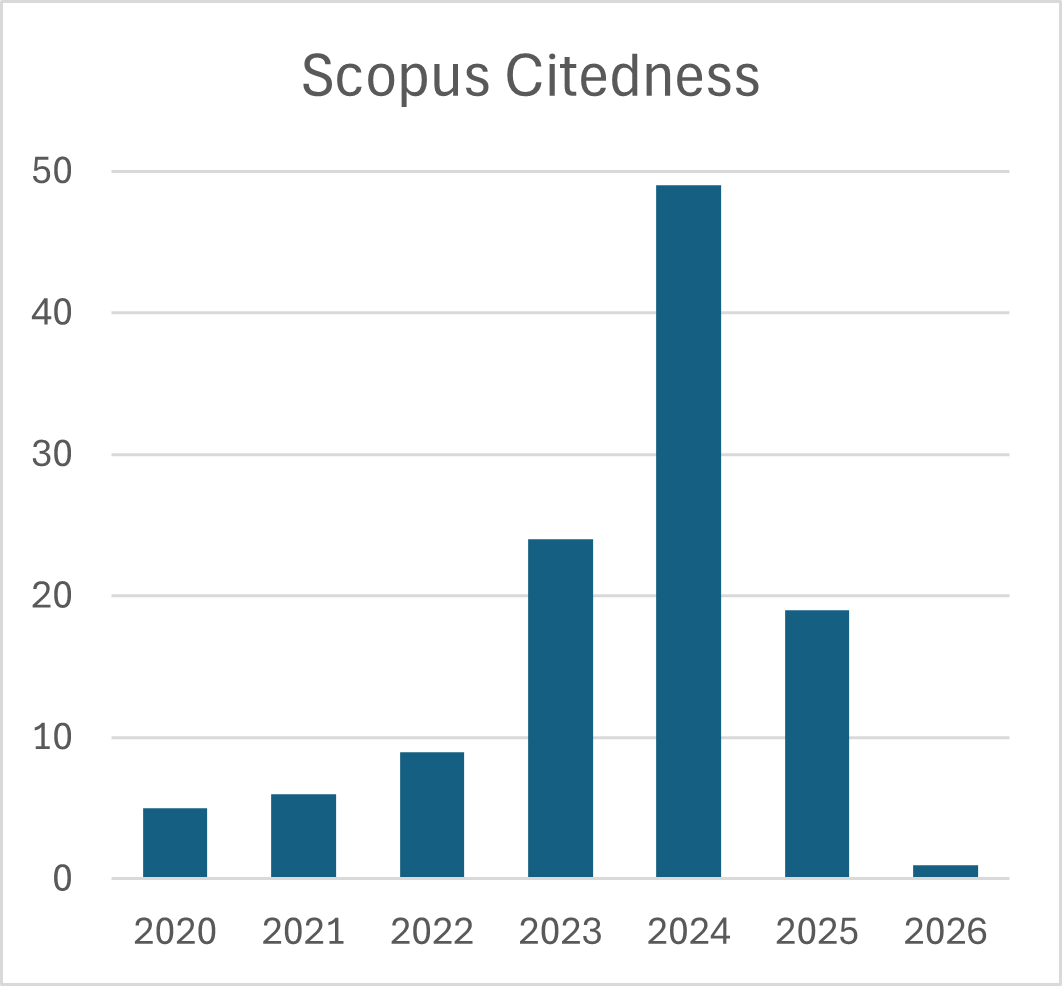The Extended Theory of Planned Behavior (TPB) to Analyze the Batik Purchase Intention of Indonesian Millennials and Gen Z
DOI:
https://doi.org/10.24002/ijieem.v3i2.5546Keywords:
Batik, Purchase Intention, Theory of Planned Behavior, PLS-SEMAbstract
As the nation’s cultural heritage of Indonesia, batik has an important role in the Indonesian economy. This industry provides job opportunities that involve a lot of human resources in it and contributes to the country's foreign exchange through the export of national batik to big countries. Although the development of the batik industry has increased, there are still problems in marketing batik products in Indonesia. These problems can lead to more serious problems such as batik craftsmen leaving the business. These problems must be overcome so that the batik industry can maintain its existence. One of the possible solutions is to understand buying behavior characteristics of the existing consumer groups, which are Millennials and gen Z. Therefore, the purpose of this research is to use a theoretical framework based on the Planned Behavior Theory (TPB) model by Ajzen (1991) to analyze the relationship between experimental variables and the effect on Indonesian Millennials and Gen Z's intention to buy Batik. The focus area selected was Java Island because that is an area with the largest batik industry center in Indonesia. So, the potential to reach a larger consumer need to be explored. Considering the potential of the new generation's high buying power, Millennials and Gen Z were selected as the subject of this study. A total of 177 respondents from various provinces in Java were involved in filling out an online questionnaire containing measurement items related to the purpose of this study. The next step is processing the data using the Partial Least Square Structural Equation Model (PLS-SEM), which has been widely used in various research disciplines over the last two decades. The results show that the five of six hypotheses tested are acceptable: 1) Attitude towards behavior influences purchase intention; (2) Batik Brand Image influences Attitude towards behavior; (3) Perceived behavior control influences purchase intention; (4) Subjective norm influences purchase intention; (5) attitude mediates the relationship between brand image and purchase intention.
References
Ajzen, I. (1991). The theory of planned behavior. Organizational Behavior and Human Decision Process, 50(2), 179–211.
Ajzen, I. & Fishbein, M. (1977). Attitude-behavior relations: A theoretical analysis and review of empirical research. Psychological Bulletin, 84(5), 888–918.
Antonio, F. & Astika, P. (2019). The Antecedents of Consumption Value and Its Impact on Customer Behavior; a Study of Batik Cloth on Non-Javanese Indonesian Millennials. International Journal of Applied Business and International Management, 4(1), 46–58.
Badgaiyana, A.J. & Verma, A. (2015). Does urge to buy impulsively differ from impulsive buying behavior? Assessing the impact of situational factors. Journal of Retailing and Consumer Services, 22, 145-147.
Bruner, G.C. (2010). Marketing Scales Handbook 3rd ed. Illinois, USA: GCBII Productions.
Budiarti, A.P., Engriani, Y., & Yasri, Y. (2019). Antecedents of Batik Tanah Liek Consumer Purchase Intention. Paper presented at the 2nd Padang International Conference on Education, Economics, Business, and Accounting, Indonesia.
Chen, M. F. & Tung, P. J. (2014). Developing an extended Theory of Planned Behavior model to predict consumers’ intention to visit green hotels. International Journal of Hospitality Management, 36, 221–230.
Cho, E. & Fiore, A. M. (2015). Conceptualization of a holistic brand image measure for fashion-related brands. Journal of Consumer Marketing, 32(4), 255–265.
Dabholkar, P. A., & Bagozzi, R. P. (2002). An attitudinal model of technology‐based self‐service: Moderating effects of consumer traits and situational factors. Journal of the Academy of Marketing Science, 30(3), 184–201.
Fatimah, N. & Prihandono, D. (2020). Key Determinants of Purchase Decision: A Case Study of Poeniko Batik Store in Pekalongan. Management Analysis Journal, 9(3), 290–299.
Hair, J., Hult, G. T., Ringle, C., & Sarstedt, M. (2016). A Primer on Partial Least Squares Structural Equation Modeling (PLS-SEM). Munich: Sage Publishing.
Hair, J.F., Risher, J.J., Sarstedt, M., & Ringle, C.M. (2019). When to Use and How to Report the Results of PLS-SEM. European Business Review, 31(1), 2–24.
Kaiser, F.G. & Scheuthle, H. (2003). Two challenges to a moral extension of the theory of planned behavior: moral norms and just world beliefs in conservationism. Personality and Individual Differences, 35(5), 1033–1048.
Keni, K., Aritonang, L. R. & Pamungkas, A. S. (2019). Purchase Intention, Satisfaction, Interest, and Previous Purchase Behaviour. International Journal of Innovation, Creativity, and Change, 5(6), 1129–1140.
Kotler, P. & Kevin, L.K. (2007). Manajemen Pemasaran. Millenium Edition. Jakarta: PT.Indeks.
Kotler, P.T. & Keller, K.L. (2012). Marketing Management. Pearson Prentice Hall: New Jersey.
Mubarok, M. M. (2018). The Effect of Brand Image and Consumer Attitudes on The Decision to Purchase Batik Jetis Sidoarjo Mediated by Interest to buy. Journal of Economics, Business & Accountancy Ventura, 21(1), 105–116.
Manalu, V. G. & Adzimatinur, F. (2020). The Effect of Consumer Ethnocentrism on Purchasing Batik Products : Application of the Extended Theory of Planned Behaviour (TPB) and Price Sensitivity. Budapest International Research and Critics Institute-Journal (BIRCI-Journal), 3, 3137–3146.
Noble, S. M., Haytko, D. L., & Phillips, J. (2009). What drives college-age Generation Y consumers? Journal of Business Research, 62(6), 617–628.
Sarstedt, M., Ringle, C. M., & Hair, J. F. (2017). Partial least squares structural equation modeling. In C. H, M. K, & A. V (Eds.), Handbook of market research.
Tommasetti, A., Singer, P., Troisi, O., & Maione, G. (2018). Extended Theory of Planned Behavior (ETPB): Investigating customers’ perception of restaurants’ sustainability by testing a structural equation model. Sustainability, 10(7), 1–21.
Zhang, Y. (2015) The Impact of Brand Image on Consumer Behavior: A Literature Review. Open Journal of Business and Management, 3, 58-62.
Downloads
Published
How to Cite
Issue
Section
License
Copyright (c) 2021 International Journal of Industrial Engineering and Engineering Management

This work is licensed under a Creative Commons Attribution 4.0 International License.








